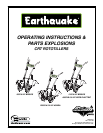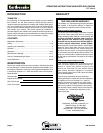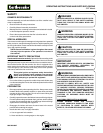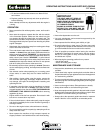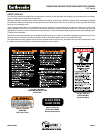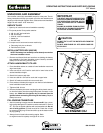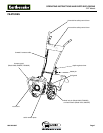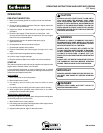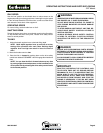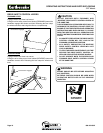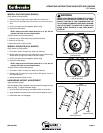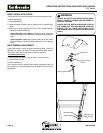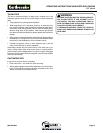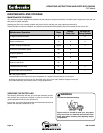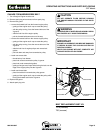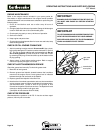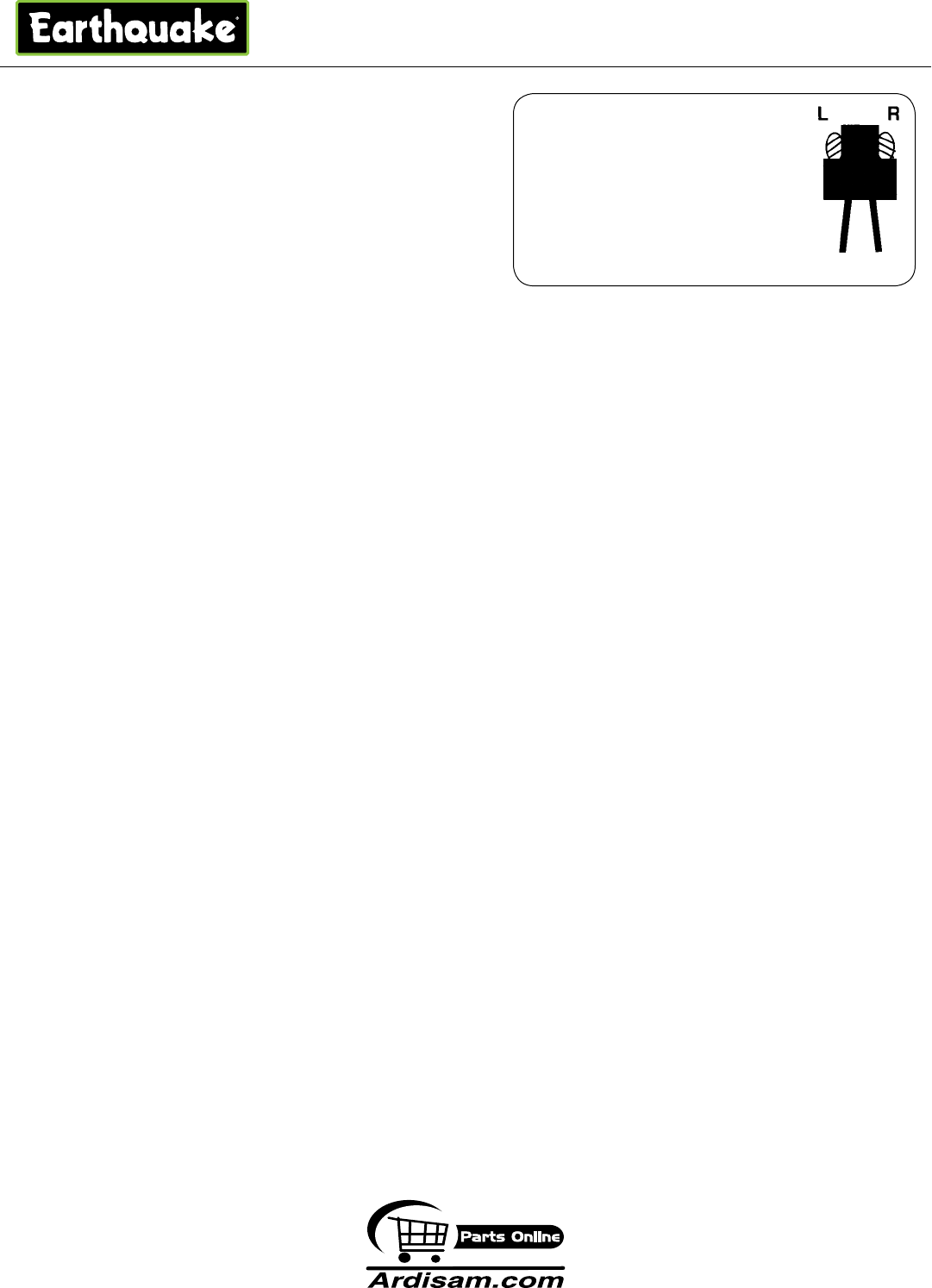
OPERATING INSTRUCTIONS AND PARTS EXPLOSIONS
CRT Models
Page 4
800-345-6007
IMPORTANT
THE RIGHT AND LEFT SIDES OF
YOUR ROTOTILLER ARE DETER-
MINED FROM THE OPERATING POSI-
TION AS YOU FACE THE DIRECTION
OF FORWARD TRAVEL.
ENGINE IS SHIPPED FROM FACTORY
WITHOUT OIL. YOU MUST ADD EN-
GINE OIL BEFORE STARTING ENGINE.
c. Fill fuel tank outdoors with extreme care. Never fill fuel
tank indoors.
d. Replace gasoline cap securely and clean up spilled fuel
before restarting.
• Never attempt to make any adjustments while the engine is
running.
OPERATION
• Never operate the tiller without guards, covers, and hoods in
place.
• Never start the engine or operate the tiller with the wheels
in the free-wheel position. Make sure the wheel lock pins
are engaged through the wheel hubs and wheel axle. The
wheels act as a brake to keep the tiller at a controlled speed.
Disengage wheel lock pins to permit free-wheeling only when
engine is stopped.
• Keep hands, feet, and clothing away from rotating parts. Keep
clear of tiller tines at all times.
• Tines and wheels rotate when tiller is engaged in forward or
reverse-- in forward, tines and wheels rotate when the drive
safety control lever, labeled “FORWARD”, is pulled toward the
handlebar. In reverse, wheels and tines rotate when the drive
safety control lever, labeled “REVERSE”, is pulled toward
the handlebar. Releasing the drive safety control levers to the
neutral position stops the wheels and tines. Do not operate
both drive safety control levers at the same time.
• Be extremely cautious when operating in reverse. Take extra
care to avoid slipping or falling, and keep hands and feet clear
of tines.
• Use extreme caution when operating on or crossing gravel
drives, walks, or roads. Stay alert for hidden hazards or
traffic.
• After striking a foreign object, stop the engine, remove the
wire from the spark plug, thoroughly inspect the tiller for
any damage, and repair the damage before restarting and
operating the tiller.
• If vegetation clogs the tines, raise the handlebars to elevate
the tines, and run the tiller in reverse. If this does not clean
clogged vegetation from the tines, STOP THE ENGINE AND
DISCONNECT THE SPARK PLUG WIRE before removing
vegetation by hand.
• Engine muffler will be hot from operation. Do not touch it with
bare skin or a severe burn may result.
• If the unit should start to vibrate abnormally, stop the engine
and check immediately for the cause. Vibration is generally a
warning of trouble.
• Do not run the engine indoors; exhaust fumes are deadly.
• Do not overload the machine capacity by attempting to till too
deep at too fast a rate.
• Never operate the machine at high transport speeds on
slippery surfaces. Look behind and use care when backing.
• Never allow bystanders near the unit.
• Use only attachments and accessories approved by the
manufacturer of the tiller.
• Never operate the tiller without good visibility or light.
• Be careful when tilling in hard ground. The tines may catch
in the ground and propel the tiller backward. If this occurs, let
go of the handlebars and do not restrain the machine.
• Take all possible precautions when leaving the machine
unattended. Disengage all control levers, stop the engine,
wait for all moving parts to stop, and make certain guards
and shields are in place.
• When leaving the operating position for any reason:
- shut off the engine.
- wait for all moving parts to stop.
MAINTENANCE AND STORAGE
• Keep machine, attachments, and accessories in safe working
condition.
• Check shear bolts, engine mounting bolts, and other bolts at
frequent intervals for proper tightness to be sure the equipment
is in safe working condition.
• To prevent accidental starting, always disconnect and secure
the spark plug wire from the spark plug before performing tiller
maintenance.
• Never run the engine indoors. Exhaust fumes are deadly.
• Always allow muffler to cool before filling fuel tank.
• Never store equipment with gasoline in the tank inside a closed
building where fumes may reach an open flame or spark. Allow
the engine to cool before storing in any building.
• Always refer to the operator’s guide instructions for important
details if the tiller is to be stored for an extended period.



